Afanasy Lavrent'evich Ordin-Nashchokin: voivode, diplomat, intelligence officer
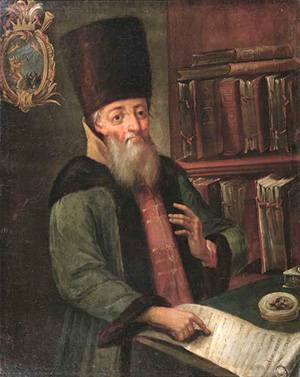
Foreign political confrontation is always a complex process. It is closely intertwined, complementing each other, the sharpness and strength of iron, the scrupulous clarity of the diplomatic written syllable and virtuoso oral fencing. When weary infantry columns are stopped, the haggard cavalry stops dusting and the endless creaking of carts stops, the opposing sovereigns indulge in thoughts and accompanying doubts. The sad look of the empty throats of the recently full chests, filled with bitterness, sincere or false, reports of courtiers and confidants. Losses, losses and, of course, debts. Without an account, spilled blood and burned powder put another comma in stories. A war — victorious or lost — must be ended sooner or later, and then those who are supposed to be silent when guns speak come into play. Battles and campaigns are replaced by diplomatic battles, sometimes by perseverance, intensity and ruthlessness that are not inferior to ordinary war.
Italian roots in the Russian land
Afanasy Lavrent'evich Ordin-Nashchokin, the neighbor boyar and the voivode, was one of the brightest, most significant and, most importantly, talented figures among Russian political and military figures of a difficult XVII century for Russia. This century was rapidly and impetuously advancing across the expanses of national history. Time after time, waves of Polish intervention rolled in from the western frontiers, bringing along the panic rampage and spilling the next "miraculously saved" prince from the muddy water. Business-like Swedes ruled in Izhora land in a businesslike manner, and in the south, the Wild Steppe blazed with bright bonfires of Tatar raids. Afanasy Ordin-Nashchokin was born in the 1605 year in such a difficult foreign policy environment. The future statesman was born in a modest family of a small landowner in Pskov. The Ordin-Nashchokin family was considered seedy by that time, but had its curious family legend. According to legend, their roots went to the Apennine Peninsula, not close to Russia. It was believed that their ancestor left Italy and entered the service of the Grand Duke of Tver - Alexander Mikhailovich - at the end of the XIII century. In the baptism of his name was Dmitry, and nicknamed Red.
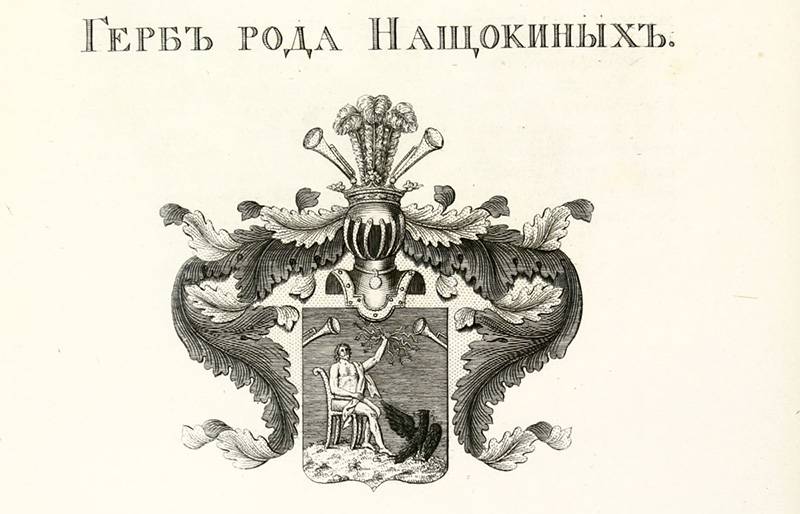
His son Dmitry Dmitrievich, who became a boyar at the court of the Grand Duke, took a lively part in the uprising against the Ambassador of the Golden Horde Shevkal, which took place in 1327, Boyarin Dmitry Dmitrievich during this event was wounded on the cheek in battle with the Tatars, for which he received the nickname Nashok. Then he moved to Moscow, where he entered the service of the Grand Duke of Moscow, Simeon Ivan Gordomu. Since then, the name of the Nashchokin appeared. One of the descendants of Dmitri Dmitrievich, Andrei Filippovich died in the battle of Orsha 8 in September 1514 during the Russian-Polish war of 1512 – 1522. He had the nickname Horde. And the race became known as Ordin-Nashchokin.
The Ordins-Nashchokins continued their service to the Moscow princes, but they didn’t count for any special merits, they did not succeed in moving to the upper echelons of power, and they were lost among the small city nobility. The only representative of the genus occupying a more or less significant post was Ivan Ivanovich Ordin-Nashchokin, who was in 1584 – 1585. the vicar of the fortress of Belaya.
Despite the fact that the family was not distinguished either by generosity or vast estates, or acquired wealth, the father of the future diplomat gave Athanasius a thorough education. Obviously, the parent rightly believed that in a difficult situation his son, who had barely emerged from the period of a long time of Troubles, would have to rely only on his personal qualities. The young man could not rely on the length of beards and the density of beaver caps of powerful relatives - for lack thereof. In provincial Pskov, young Ordin-Nashchokin learned to read, write, and mathematics. Studied perfectly Latin and German. The priest taught the boy the literacy; in linguistics the educated service Pole had a great help. It should be noted that in that historical period Pskov was a border town with a strong cultural influence from abroad. From a young age, Athanasius was already well versed not only in languages, but also in many Western customs and traditions. Subsequently, being already a diplomat and repeatedly contacting the subjects of the Commonwealth, he will learn Polish in addition to everything.
When the young man turned 15 years old, his father in Pskov recorded him in the regiment. So began the sovereign service of Athanasius Ordin-Nashchokin. His career at first developed slowly, and for its more successful development it was required to be closer to the throne. At the beginning of the 30's the young man married the daughter of a Pskov nobleman Vasily Kolobov. In the marriage he had two sons - Vasily and the Warrior. Russia has always felt the need for educated people, and at the beginning of the 40s. Ordin-Nashchokin manages to move to Moscow. In the capital, through the relatives of his wife, he was introduced to the boyar Fyodor Ivanovich Sheremetev, an influential boyar at that time, who was then a comrade-in-chief of the Big Treasury.
However, Athanasius made his way into the people thanks to his education, knowledge and character, persistent and thoughtful. The young nobleman, who knew foreign languages and the “German” customs, was soon noticed, and in 1642 he was sent to the Swedish border to inspect and correct the state border along the Pizhva and Meuzitsa rivers. It was necessary to investigate on the spot the lands illegally seized by the Swedes after the Stolbovo peace, concluded as a result of the Russian-Swedish war in 1617. Ordin-Nashchokin approached the matter scrupulously and thoroughly. Local residents and officials were thoroughly interviewed. Census and scribal books and other service documentation were studied. Afanasy Lavrent'evich managed to provide diligent neighbors who played a misunderstanding with irrefutable evidence of their being wrong. The disputed territories were returned to Russia. He performed his first responsible assignment perfectly.
Meanwhile, the situation in the south of Russia has worsened. Relations with the Ottoman Empire fell into a state of crisis, and this implied natural problems with the Crimean Khanate. As a person who has shown himself well in business, Ordin-Nashchokina is sent to Moldova with an intelligence and diplomatic mission. Its goal was to find out, if possible, the intentions of the Turkish side and whether it is necessary to expect a rapprochement between Istanbul and Warsaw on the issue of anti-Russian policy. The fact is that back in 1637 a detachment of Don Cossacks captured the Turkish fortress of Azov, which gave rise to a long political crisis between the two countries. In 1641, a large Ottoman army attempted to recapture Azov, but failed. Russia was in the direct perspective of a big war with the Ottoman Empire - the Cossacks were asked to accept the fortress as an allegiance to the king.
In October, 1642 Ordin-Nashchokin and several of his accompanying persons left Moscow for the capital of Moldova, Iasi. The Moldavian principality was in vassal dependence on the Ottoman Empire. The principality was small, but it had an important geographical position: the interests of Porta, the Commonwealth and the Holy Roman Empire intersected here. The Russian envoys were favorably received by the Moldavian ruler Vasile Lupu, and after the exchange of courtesies and gifts, Ordin-Nashchokin and his companions were assigned a separate residence. The intelligence diplomat has begun to gather information, since there was a favorable environment for this. He managed to obtain information about the deep contradictions within the Polish Sejm regarding relations with Russia, as well as that the expansion of the Ottoman Empire is not yet in the direction of Moscow. Neighborhood with the Commonwealth took an increasingly tense character. Despite the information received, Mikhail Fedorovich did not want to get involved in a big war, and the next year, 1643, Ordin-Nashchokin was sent to Istanbul as part of the embassy of the boyar I.D. Miloslavsky, who was to deal with the Azov crisis. The treaty with the Turks was signed, and Azov became Turkish again. In exchange, Russia acquired some stability on its southern frontiers in the conditions of a gradual increase in contradictions with the Commonwealth.
Such a difficult and dangerous neighbor could not be left unattended, and in 1644 the city of Ordin-Nashchokin was sent with a reconnaissance mission to the western border and to Poland itself. It was necessary to verify the information received about the allegedly preparing Polish-Danish invasion of Russia. The fact is that the Danish prince Waldemar wooed the Tsar's sister Irina Mikhailovna and was refused, which upset many in Copenhagen, and some people wanted to significantly increase the scale and consequences of the prince's heartbreak.
Having established strong contact with representatives of the Orthodox clergy in the eastern regions of the Commonwealth, in particular with the Archimandrite of the Spiritual Monastery in Vilno, Nicodemus, Afanasy Lavrent'evich began to collect the necessary information. To expand the range of information sources, Ordin-Nashchokin specially equipped and sent merchants to Lithuania, who were actually engaged in reconnaissance. The findings were important and generally reassuring. Commonwealth was covered by internal turmoil and unrest, and the Diet would in no way allow King Wladyslaw to play some kind of frontier war games. As for Denmark, it was absorbed in the confrontation with Sweden and did not think about any invasions. However, the rumors spread by the Polish agents about the supposedly coming war caused a state close to quiet panic in the regions bordering the Polish-Lithuanian Commonwealth, and Ordin-Nashchokin had to energetically bring order and calm the peasants.
While he was carefully carrying out the mission entrusted to him, power was changed in Moscow. Instead of Mikhail Fedorovich, the throne was taken by the young Tsar Alexei Mikhailovich. Following this, there were numerous personnel changes. The place of Fedor Sheremetev, who patronized Ordin-Nashchokin, was taken by Boyar Boris I. Morozov, one of the largest landowners and part-time educator of the young tsar. In the career of a nobleman, there was a pause, since he was not close to the people who had advanced at the accession of Alexei Mikhailovich. Afanasy Lavrentievich was out of work and went to his Pskov estate. And so, perhaps, Ordin-Nashchokin would have wasted his life as an ordinary provincial landowner if it were not for the events that happened in Pskov in the 1650 year, and their consequences.
The year before, in 1649, an agreement was concluded with Sweden providing for the payment of cash compensation for all the numerous defectors to the Russian side. Moreover, Russia has pledged part of the funds to pay in bread sold to the state at market prices. Having learned about this circumstance, the Pskov merchants inflated bread prices by speculation. This caused natural discontent of the Pskov people, which resulted in 28 February 1650 in open rebellion. The city’s government was lost, the situation was out of control. First of all, the anger of the population was directed at traders and people of foreign origin. Some residents had to leave Pskov, including Ordin-Nashchokin. He led all those who tried to resolve the conflict, trying to avoid bloodshed. Afanasy Lavrent'evich, having collected all possible information about the current situation, on his own initiative in early March 1650 went to Moscow. There he was able to devote the young Alexei Mikhailovich to the details of the uprising and to express his views on its settlement.
The king noted the zeal and ability of Athanasius Lavrentievich, and he again soon found himself in the state service. A nobleman was seconded to the detachment of I. N. Khovansky, aimed at suppressing the Pskov riot, to assist. Using his diplomatic skills, Ordin-Nashchokin was engaged in exhorting the rebels, seeking to reduce the victims to a minimum. Khovansky had a high opinion on the activities of his assistant, and so began the return from a leisurely landlord life to government activities. Already in 1652, Ordin-Nashchokina was again sent to the border with Sweden to settle the territorial disputes that had arisen.
War and negotiations
In the middle of the 17th century, the Little Russian crisis that had arisen in the Polish-Lithuanian Commonwealth began to respond with an ever stronger resonance in Russia. The repeated appeals of the leader of the rebellious Cossacks, Hetman Bohdan Khmelnitsky, for help and acceptance into Russian citizenship were finally heard in Moscow. A positive decision on this issue undoubtedly meant a war with Poland. Like many other noblemen, Ordin-Nashchokin could not stand aside from such large-scale events - he had to serve the Fatherland not only as an intelligence officer and a diplomat, but also to take direct part in hostilities.
In September 1654, he persuaded residents of Vitebsk captured by the Poles to surrender the city to the Russian army without a fight and take the oath to the king. In October of the same year, together with a detachment of the Pskov governor I. I. Saltykov, he participated in the sieges and storming of cities in the middle reaches of the Western Dvina. In February, 1655 was appointed a voivode in Druj, a small town of Polotsk voevodship, recently beaten off from the Poles, near the Swedish border. Having reassured the Swedes, frightened by the Russian military activity, Ordin-Nashchokin, together with a detachment of 700, undertook, with the approval of the king, a march on Dinaburg in southern Livonia, but because of the swaggeringness of his superior commander I. I. Saltykov, who considered himself too generous and noble to help to some seedy noblewoman, the siege of Dinaburg was lifted.
In 1656, by concluding a truce with the Polish-Lithuanian Commonwealth, Russia launched a war with Sweden, because it saw in its actions a threat to its conquests in Poland. With his initiative and administrative abilities, Ordin-Nashchokin once again attracted the attention of Alexei Mikhailovich during his march on Riga. It was he who collected detailed information on the situation in the Baltic States, the number and location of the Swedish troops, the condition of roads and city fortifications. During the Riga campaign, Ordin-Nashchokin fulfilled an important diplomatic mission, making a visit to Mitava, where the residence of the Grand Duke of Courland Jacob Kettler was located. The diplomat was able to agree on the signing of an agreement on friendship and cooperation between Russia and Kurland on 9 in September of 1656.
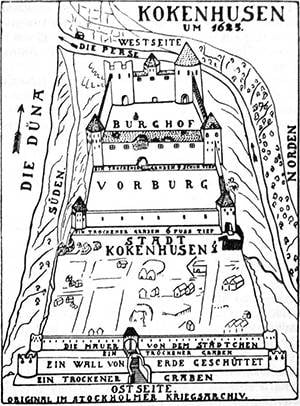
After the enemy had recaptured the city of Kokengausen, renamed Tsarevichev-Dmitriev, Ordin-Nashchokin was transferred there from Druya voivode, which was an undoubted increase and recognition of his merits. Soon Afanasy Lavrentievich gets another promotion - he is instructed to be the manager, in fact the governor, of the whole of Livonia cleared from the Swedes. It was useful and knowledge not only of foreign languages, but also customs. The voivode sought to make the local population loyal: he returned unfairly deprived property, left practically unchanged the traditional Magdeburg law in cities, supported trade and crafts.
Ordin-Nashchokin was not only a simple and zealous conductor of the royal will. By that time, he had his own foreign policy and economic program for the Russian state. He considered it extremely important for Russia to have trading ports on the Baltic in order to make economic contact with the rich countries of Western Europe without hindrance. The priority goal was to create a coalition of states against a strong Sweden at that time. Commonwealth planned to incline to the union and joint action against Stockholm. At the same time with Poland "put up in moderation," without sacrificing their own interests. The whole problem was that Russia had two important foreign policy tasks at once. On the one hand, it was necessary to return the lands seized by the Polish-Lithuanian Commonwealth, and on the other hand, to gain access to the Baltic, and there was no force to solve these complex issues simultaneously.
Sweden was a more powerful enemy, and it could be defeated in a coalition with other states and first of all with the Commonwealth. At that time, apart from the Poles, Brandenburg and Denmark opposed Stockholm. The Livonian Governor persistently sent a message to a message to Moscow, insisting on reconciliation with the Commonwealth, which could be dealt with later, in order to come up with a united front against the main, in his opinion, enemy - Sweden. The moment was very favorable: Holland joined the anti-Swedish coalition, seeing the infringement of its interests in the Baltic; the Swedish Baltic provinces were seized with a plague of plague, the victim of which was the most capable commander of the enemy, Magnus Delagardi.
Ordin-Nashchokin was in constant correspondence with Alexei Mikhailovich, who, meanwhile, did not accept the political program of his correspondent, but appreciated his abilities and intelligence. For five years he was the governor of Livonia Afanasy Lavrent'evich in Tsarevichev-Dmitriyev, handling the troublesome Baltic affairs. Thanks to his efforts, this region, which had recently been ravaged by war, began to supply with bread not only its own territory and the troops located on it, but also the adjacent regions. In 1658, he was granted the title of duma nobleman.
In the same year, Athanasius Lavrentievich was attracted to secret negotiations with the Swedish side. Moscow was increasingly absorbed by Little Russian and Polish affairs, and it tried to shed the burden of the war with Stockholm from its shoulders as quickly as possible. With the death of Bohdan Khmelnitsky, the pro-Western Ivan Vyhovsky became a hetman, the positions of the anti-Polish group were strong in the capital. Ordin-Nashchokin was introduced to the delegation not by chance. Officially, it was headed by the noble Prince Prozorovsky, but the direct negotiation was entrusted to Afanasy Lavrentyevich, as a person who knows the customs and customs of the opposite side and spent more than one year in Livonia.
The Swedes were in very cramped foreign policy circumstances and needed peace, but they tried to save face and made no concessions. Then Ordin-Nashchokin went to the trick and insisted that the army of the boyar Khovansky, stationed at Pskov, received an order to advance to Narva, where the very fact of its presence could appease Swedish intransigence. However, there was a hitch - the noble Khovansky was in charge and refused to comply with the order. It came to Alexei Mikhailovich, who sent a letter to the stubborn person with the appropriate suggestions, and he was forced to obey. Nothing improves the atmosphere at the talks, as the proximity of a large army - December 1 1658 in Valiesari was signed a truce between Sweden and Russia. For three years, all the lands conquered before, remained in Russia, and then the final peace will be signed. The conditions could have been better, but Moscow, experiencing an escalation with the Commonwealth, was in a hurry.
The consequences were not long in coming: King Charles X, full of belligerent zeal, died, and his more peace-loving successor, Karl XI, came to the throne, and in May 1660 entered into a world with an opposing coalition with the mediation of France, which unleashed Sweden with respect to Russia. The fighting against the Commonwealth evolved at that time is very unfortunate. In 1659, Trubetskoy's army failed at Konotop, and Moscow found itself in even less favorable conditions than two years ago. And Stockholm could not use it. 21 June 1661 in Kardis, the final peace was signed, according to which Russia returned to its former opponent all the previously conquered Livonia. Ordin-Nashchokin’s plans for Sweden were broken, but he expected to return to the Baltic problem again after the end of the war with the Commonwealth.
Polish knot
According to the terms of the world, Ordin-Nashchokin handed over to the Swedes Tsarevichev-Dmitriev, having previously removed all weapon and ammunition, and together with the garrison headed for the Russian borders. In January 1662, a dumnyi nobleman was received by the tsar in Moscow and included in the embassy under the leadership of Nikita Odoyevsky, who was leaving Smolensk for talks with the Poles. However, emissaries of the Polish-Lithuanian Commonwealth did not rush to a meeting, and Ordin-Nashchokin persuaded the king to send him at the head of a special delegation directly to the Polish-Lithuanian Commonwealth itself. When discussing the protocol of future negotiations, the Duma nobleman managed to cool the hotheads demanding the granting of the right to the Polish royal throne for Alexei Mikhailovich. This would not bring benefits to Russia, but would only turn the majority of nearby European countries against it.
In the autumn of 1662, the commission arrived in the Polish-Lithuanian Commonwealth and began negotiations. The Poles were brazen and confident. All the persistent attempts of Ordin-Nashchokin and his colleagues to explain to them the usefulness of the conclusion of the anti-Swedish alliance were arrogantly rejected. The negotiations did not take shape, but Afanasy Lavrent'evich managed to achieve agreement on the return visit of the Polish Commissioner to Moscow for further negotiations. The 1663 military campaign under the leadership of King Jan Casimir was unsuccessful for the Poles, which largely stabilized their ambition.
In the spring of 1664, preliminary peace talks began near Smolensk. The Russian embassy was headed by the boyars Odoyevsky and Dolgoruky. Enough and representatives of other eminent names. Ordin-Nashchokin was also included in its composition. The negotiation process was difficult. On the one hand, the royal voivods were saddened by the failures near Vitebsk, on the other hand, the “beaver hats” were angry that among them was a rootless nobleman-upstart, who, however, surpassed them in everything except nobility. It turned out that Ordin-Nashchokin had to withstand the onslaught of the Poles who did not quite adequately perceive the reality and, at the same time, fight with armor, stubbornness and frank sabotage of their own colleagues. The king had to constantly reconcile his own ambassadors with his letters, but time was lost and the agreement in 1664 could not be reached.
However, consultations on the diplomatic direction continued, since both states were exhausted by a long war, and the forces of the Commonwealth, weakened by internal turmoil and an empty treasury, decreased faster. The negotiations were continued in 1666, and were preceded by lengthy disputes and debates. One court group demanded to squeeze the enemy out to the maximum, select all the lands lost as a result of the Time of Troubles and get all Little Russia. Ordin-Nashchokin, having received the rank of a okolnichy by this time, insisted on a more flexible and balanced strategy: agree to milder conditions and leave the Right Bank to the Poles in exchange for an alliance against Sweden. This idea was only partially approved - it was assumed that the anti-Swedish alliance would not focus on attention, because at that time the situation with the Crimean Khanate and Porto worsened. Thus, the strategic access to the Baltic was again postponed indefinitely.
The eight-month diplomatic battle finally ended on 13 in January of 1667 with the signing of the long-awaited peace for Andrusovo. Having acquired South Livonia, Ordin-Nashchokin managed to achieve the return of Smolensk, a number of other territories and the entire Left-Bank Ukraine to the Dnieper. Kiev was to remain under Russian control for two years. Agreements were reached on joint resistance to the Tatar threat. The agreement was signed on 13 years with a further extension. The signing of this agreement was epoch-making in many respects — the long struggle for Western Russia was ending, the weakening of the Polish-Lithuanian Commonwealth was no longer a potential threat. Moscow could now deal with the solution of other foreign policy tasks.
The successful signing of the world of Andrusovo put Ordin-Nashchokin among the politicians most close to the tsar. Soon, 2 February 1667 of the year, he was finally granted in the boyars, and in June 1667 was under his control an embassy order and several other institutions, for example, the Little Russian order, Vyazma customs, management of iron plants. Ordin-Nashchokin concentrated in his hands not only the entire external, but also many areas of domestic policy, and in fact became the head of the government. Boyar, who did not win any special wealth to the fatherland on his long and successful service, except for his own small Pskov estate, the king granted Poretskaya volost near Smolensk and a salary of 500 rubles. In addition, he was presented with a satin fur coat in 200 rubles.
Reforms and plans
Having taken such a high post, Ordin-Nashchokin, whom many Europeans who knew him called “Russian Richelieu,” began to implement his plans and transformations. Already in April of 1667, he promulgated a new Novotorgovy Charter, encouraging domestic trade and restricting foreign, primarily European. Eastern merchants received the right to conduct business only in Astrakhan; thus, the Russian merchants became an intermediary between East and West, having their own benefit in this. Boyar quite rightly believed that the strength and prosperity of the state always directly depends on the level of welfare of the population.
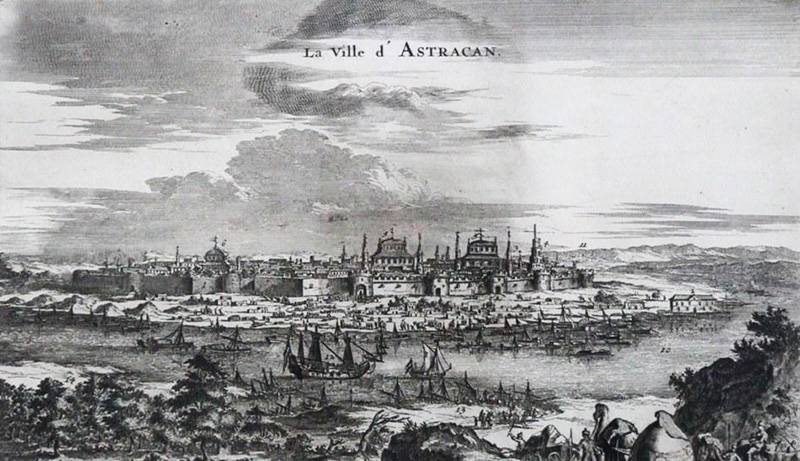
Ordin-Nashchokin was a consistent supporter of the creation of his own navy. Even during his voivodship in Livonia, he formed a small flotilla on the Western Dvina. After the signing of the Andrusovo Peace, it was decided to organize shipping along the Volga and the Caspian. To protect it by the end of 1668, the frigate “Eagle” and several small ships were built. All questions shipbuilding directly Ordin-Nashchokin. This was the first attempt to create its own regular fleet, which, unfortunately, was not crowned with success - the “Eagle” standing in Astrakhan was burned down in 1670 by order of Stepan Razin.
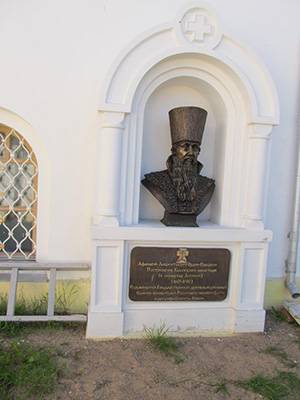
Many undertakings of the boyar-reformer, with dull malice, were frankly sabotaged by the court opposition, who did not resign themselves to the rise of the ignorant "outsider." Denunciations and complaints of a generous river flowed into the king’s hands, and the sharpness of judgment and straightforwardness, which was not characteristic of many representatives of traditional noble families, only increased the number of various slander letters. All the intensifying contradictions with Alexei Mikhailovich himself in matters of foreign policy played a certain role here. It is quite possible that this statesman, who has a deep and dynamic mind, was ahead of his era and would be more suitable for the rapid time of Peter I, than for the reigning of the increasingly “Quietest” Alexei Mikhailovich.
In 1670, the world of Andrusovo was successfully confirmed, and in April, 1671 of Ordin-Nashchokin was dismissed from the management of the embassy order and appointed as consolation as a nearby boyar. However, the capital’s life, alien to him, turned Afanasy Lavrentievich away and, after leaving Moscow, in February 1672, he took the monastic vows under the name of Anthony. The monk Anthony made a poorhouse in Pskov, for the maintenance of which were proceeds from his estate. Alexey Mikhailovich and Fedor Alekseevich who replaced him maintained relations with the former boyar, and in 1679 he was again called to Moscow as a consultant on negotiations with Polish ambassadors. After returning to the monastery, he died in 1680. Thus ended the life of one of the most prominent statesmen of Russia of the XVII century, in many ways ahead of his deeds and intentions the time in which he had to live and serve the Fatherland. Many ideas of Ordin-Nashchokin were embodied only in the reign of Peter I, the epoch of which stood already on the threshold.
Information